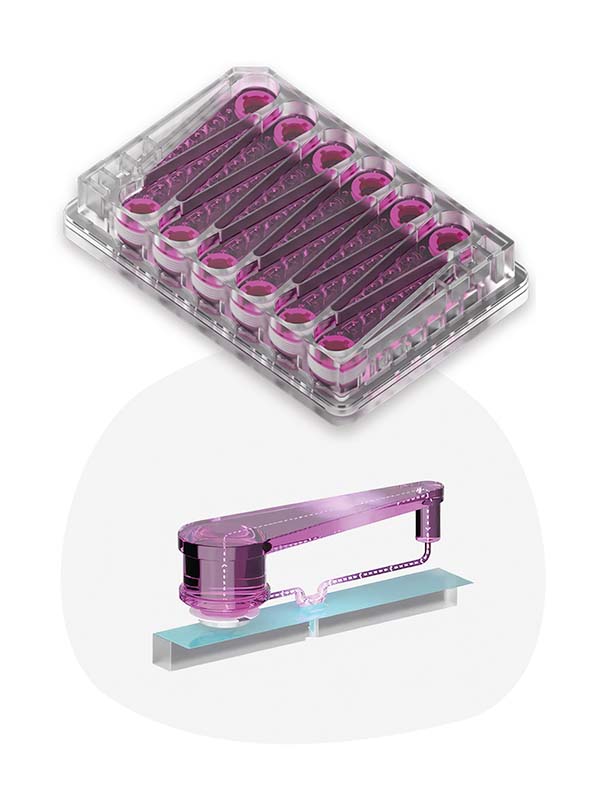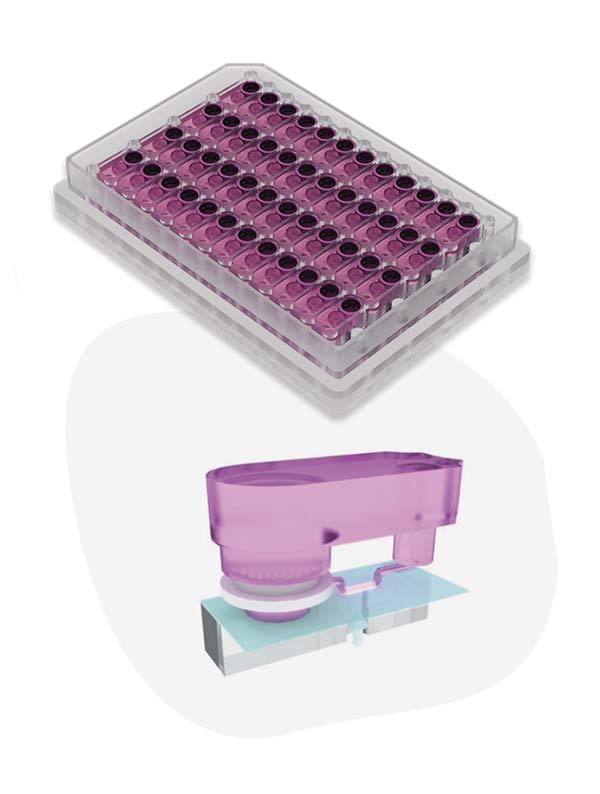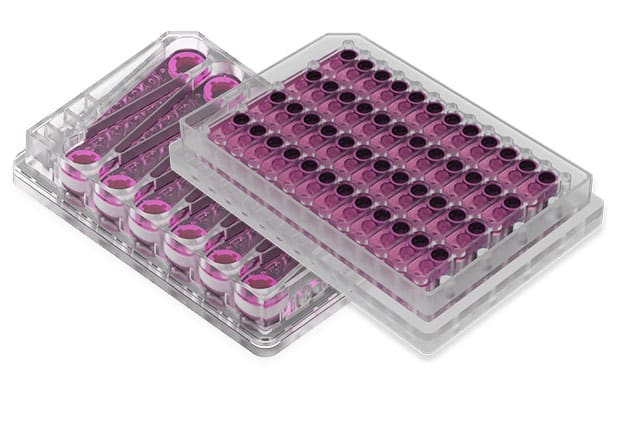Recreate 3D human liver tissues in vitro with PhysioMimix Liver plates
PhysioMimix Liver plates enable primary human liver cells to be co-cultured in 3D using an engineered scaffold that mimics the architecture of the liver capillary bed under perfusion.
3D scaffolds, embedded within the Multi-chip Liver-12 and -48 plates, are continually perfused by cell culture medium during experiments.
Perfusion provides continuous oxygen and nutrients for long-term Liver-on-a-chip culture, maintaining cell phenotypes and functions for at least four weeks.
Our plates are compatible with:
- primary cells
- induced-pluripotent stem cells
- immortalized cell lines
- circulating immune cells
- precision-cut tissue slices
- organoids
Which Liver plate matches your needs?
| Liver-12 plate | Liver-48 plate |
|---|---|
| Designed to create optimal conditions for primary human hepatocytes and non-parenchymal cells for deep mechanistic insights into drug or disease mechanisms | Designed to reduce cost/sample, increase throughput capabilities and provide data confidence for comparative drug response studies. |
 |  |
PhysioMimix Liver plate applications
Metabolic dysfunction-associated steatohepatitis
Related consumables
Explore more

Frequently asked questions
Please describe how the 3D structure of the liver model is generated in Multi-chip Liver plates?
PhysioMimix Multi-chip Liver plates contain either 12, or 48 wells. Each well contains an individual, enclosed recirculating perfusion system and a bespoke collagen-coated scaffold containing microchannels/pores in which primary liver cells (hepatocytes and non-parenchymal cells) are seeded to develop liver microtissues. Microfluidic channels inside the plate are connected to and controlled by PhysioMimix Core System. They ensure that the scaffolds are continuously perfused by cell culture media. Put simply, the microfluidics in the system mimic human blood flow to the liver. They provide nutrients, oxygen, and biomechanical stimuli to all the cells within the three-dimensional (3D) structure to support the production of a physiologically relevant 3D liver microtissue.
Please view the following animation for a visual representation of the process.
How many Hepatocytes are seeded in one experiment?
Our PhysioMimix® Core System enables you to run up to 4 conditions in triplicate per Liver-12 plate, with a well-defined and optimized seeding number of ~400,000-600,000 Primary Human Hepatocytes (PHH) per well (depending on the application), either in mono- or co-culture with non-parenchymal cells.
Using the PhysioMimix Single-organ Higher throughput (HT) system, up to 16 conditions can be explored in triplicate per Liver-48 plate, with a well-defined and optimized seeding number of 150,000 PHH per well, in either mono or co-culture with non-parenchymal cells
What materials are Multi-chip Liver plates made of? Can plate materials absorb small molecule drugs?
PhysioMimix Multi-chip consumable plates are all made of COC (cyclic olefin copolymer) which is an amorphous thermoplastic. COC offers great thermal properties and represents the most inert plastic currently available for cell culture. The latter means that COC plates are less adsorbent than commonly used polydimethylsiloxane (PDMS) plates or chips. Experiments using COC plates are therefore less prone to drug loss from non-specific binding to the plate surface than those made of PDMS and, by default, more suited to drug evaluation studies. A quick experiment can be performed to double-check for non-specific binding should there be any uncertainty. If you’d like to know more, please read: van Midwoud et al, 2012, Tsamandouras et al., 2017, McAleer et al, 2019, Grindulis et al, 2025.
Do your Liver-12 plates recreate oxygen zonation as observed in liver acinus?
To a degree. Modeling and direct measurement have shown a significant difference in pO between media upstream and downstream of our liver tissue. This demonstrates increasing oxygen depletion as the fluid passes through the lumen of liver channels, mimicking that in a sinusoid.
Regarding Liver-12 and-48 plate scaffolds, does the scaffold affects the cell phenotype?
The Liver plate scaffolds enable primary human liver cells to form 3D microtissues that mimic the microarchitecture of the human liver sinusoid. They are generated inside the scaffold and are consistently under flow which mimics the blood flow through the human liver.
Does the user need to coat scaffolds within Liver plates in ECM before starting an experiment?
No, our scaffolds come precoated with collagen I and are supplied ready to use.
Is the scaffold used made of a synthetic or natural material?
The scaffold, used in our Liver plates is made of polystyrene and coated in collagen.
Please visit the FAQs section of our Multi-chip plate page for more general information about our consumable plate range.
If you do not find the answer to your question listed, please contact us


